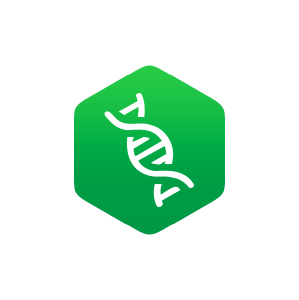13.8: Glossary- The Urinary System
- Page ID
- 40650
Glossary
anatomical sphincter smooth or skeletal muscle surrounding the lumen of a vessel or hollow organ that can restrict flow when contracted
anuria absence of urine produced; production of 50 mL or less per day
Bowman’s capsule cup-shaped sack lined by a simple squamous epithelium (parietal surface) and specialized cells called podocytes (visceral surface) that participate in the filtration process; receives the filtrate which then passes on to the PCTs
calyces cup-like structures receiving urine from the collecting ducts where it passes on to the renal pelvis and ureter
cortical nephrons nephrons with loops of Henle that do not extend into the renal medulla
detrusor muscle smooth muscle in the bladder wall; fibers run in all directions to reduce the size of the organ when emptying it of urine
distal convoluted tubules portions of the nephron distal to the loop of Henle that receive hyposmotic filtrate from the loop of Henle and empty into collecting ducts
efferent arteriole arteriole carrying blood from the glomerulus to the capillary beds around the convoluted tubules and loop of Henle; portion of the portal system
external urinary sphincter skeletal muscle; must be relaxed consciously to void urine
glomerulus tuft of capillaries surrounded by Bowman’s capsule; filters the blood based on size
internal urinary sphincter smooth muscle at the juncture of the bladder and urethra; relaxes as the bladder fills to allow urine into the urethra
incontinence loss of ability to control micturition
juxtamedullary nephrons nephrons adjacent to the border of the cortex and medulla with loops of Henle that extend into the renal medulla
leukocyte esterase enzyme produced by leukocytes that can be detected in the urine and that serves as an indirect indicator of urinary tract infection
loop of Henle descending and ascending portions between the proximal and distal convoluted tubules; those of cortical nephrons do not extend into the medulla, whereas those of juxtamedullary nephrons do extend into the medulla
medulla inner region of kidney containing the renal pyramids
micturition also called urination or voiding
nephrons functional units of the kidney that carry out all filtration and modification to produce urine; consist of renal corpuscles, proximal and distal convoluted tubules, and descending and ascending loops of Henle; drain into collecting ducts
oliguria below normal urine production of 400–500 mL/day
peritubular capillaries second capillary bed of the renal portal system; surround the proximal and distal convoluted tubules; associated with the vasa recta
physiological sphincter sphincter consisting of circular smooth muscle indistinguishable from adjacent muscle but possessing differential innervations, permitting its function as a sphincter; structurally weak
polyuria urine production in excess of 2.5 L/day; may be caused by diabetes insipidus, diabetes mellitus, or excessive use of diuretics
proximal convoluted tubules (PCTs) tortuous tubules receiving filtrate from Bowman’s capsule; most active part of the nephron in reabsorption and secretion
renal columns extensions of the renal cortex into the renal medulla; separates the renal pyramids; contains blood vessels and connective tissues
renal corpuscle consists of the glomerulus and Bowman’s capsule
renal cortex outer part of kidney containing all of the nephrons; some nephrons have loops of Henle extending into the medulla
renal fat pad adipose tissue between the renal fascia and the renal capsule that provides protective cushioning to the kidney
renal hilum recessed medial area of the kidney through which the renal artery, renal vein, ureters, lymphatics, and nerves pass
renal papillae medullary area of the renal pyramids where collecting ducts empty urine into the minor calyces
renal pyramids six to eight cone-shaped tissues in the medulla of the kidney containing collecting ducts and the loops of Henle of juxtamedullary nephrons
retroperitoneal outside the peritoneal cavity; in the case of the kidney and ureters, between the parietal peritoneum and the abdominal wall
sacral micturition center group of neurons in the sacral region of the spinal cord that controls urination; acts reflexively unless its action is modified by higher brain centers to allow voluntary urination
specific gravity weight of a liquid compared to pure water, which has a specific gravity of 1.0; any solute added to water will increase its specific gravity
trigone area at the base of the bladder marked by the two ureters in the posterior–lateral aspect and the urethral orifice in the anterior aspect oriented like points on a triangle
urethra transports urine from the bladder to the outside environment
urinalysis analysis of urine to diagnose disease
urochrome heme-derived pigment that imparts the typical yellow color of urine
vasa recta branches of the efferent arterioles that parallel the course of the loops of Henle and are continuous with the peritubular capillaries; with the glomerulus, form a portal system
Contributors and Attributions
- Glossary: The Urinary System. Authored by: Kelly, Jessica. Provided by: Herkimer College. Located at: NA. Project: AtD Course. License: CC BY: Attribution

